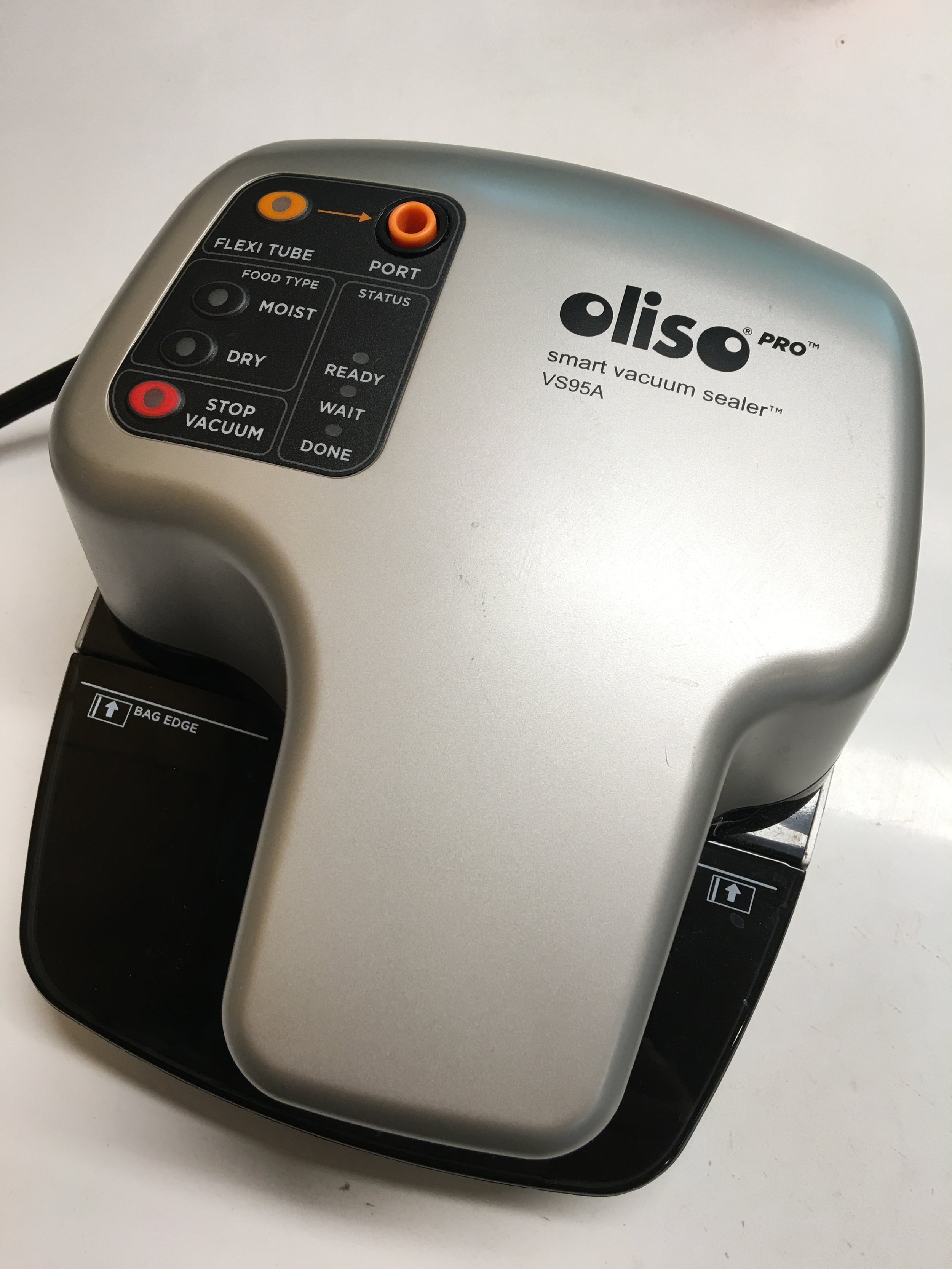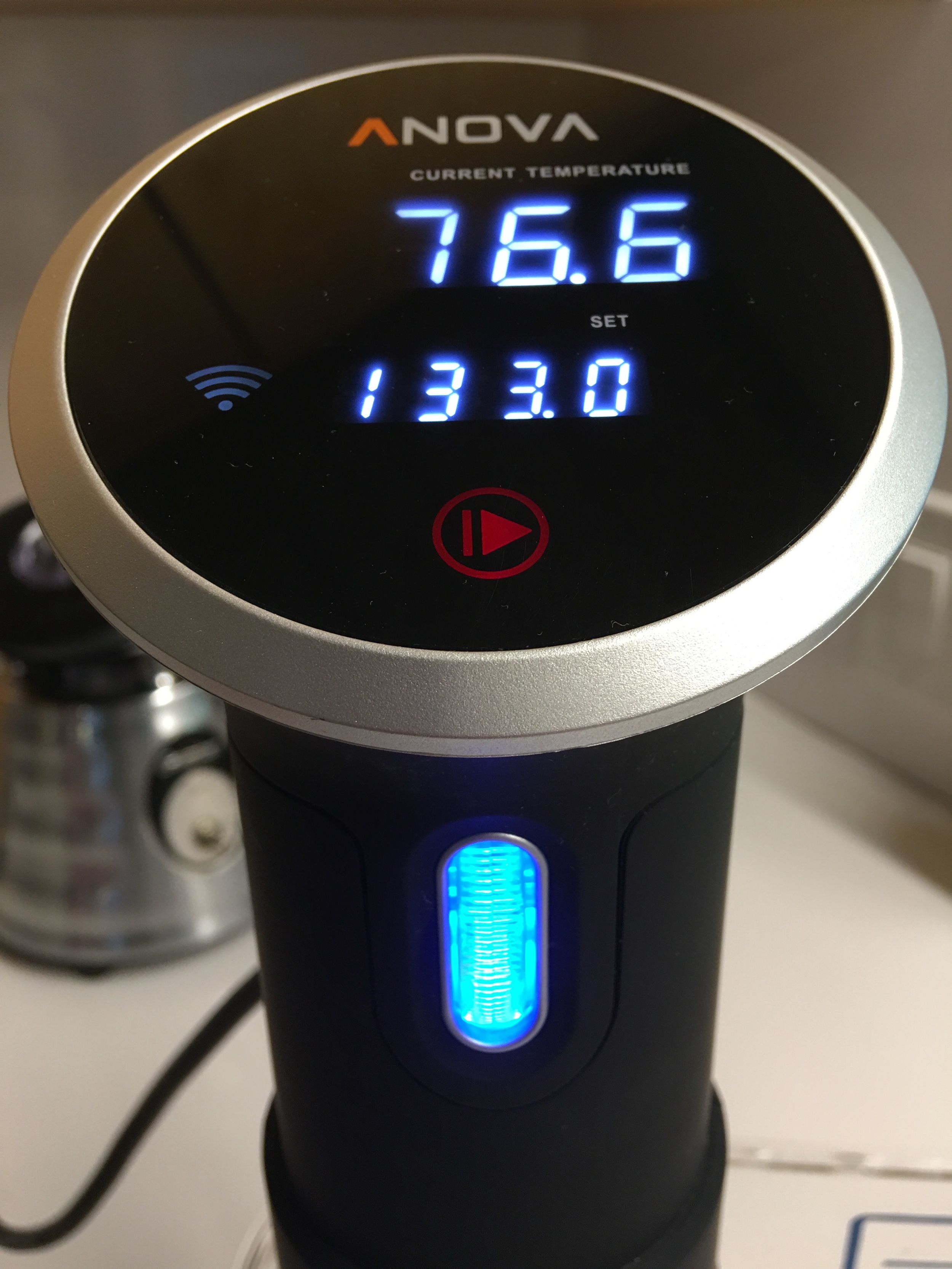Sos You Wanna Sous Vide
Sous Vide
Sous What?
I first heard of sous vide (pronounced sue veede, or if you're a dictionary \ˌsü-ˈvēd\) watching that food network show where there's like four people and they make four courses and each course someone is eliminated. Chopped. There, thought of it right when I wrote what happens each round. Anyways, a couple of times someone used a sous vide and the judges got all riled up and the camera would cut to someone doing something with a bag and I just thought it was some fancy way of marinating meat or something like that.
Cut to 2016 and I heard about this thing called a Searzall -yeah, like 'sears all'- and it's this crazy attachment for a hand held propane torch and I started to read why you'd want such a thing. Well, as it turns out when you sous vide things like meat they have no exterior texture and if you like steak and are alive inside you'll want that nice flame grilled char. Enter the Searzall: take your amazingly cooked sous vide steaks and give them an equally amazing sear!
But wait. We gotta cover the whole sous vide thing and then we can talk about the Searzall.
Why do you want to bother with sous vide? You have to buy a sous vide controller, something to hold water, plug it in, fill it up, vacuum seal your food in a bag, time it; meh.
Well, a little planning and the right equipment is going to let you make literally perfectly cooked steaks. But what about chicken? Yep. Pork? Mhm. Shit don't stop there though, make a light dressing or marinade for your meat and have it cook in that marinade during the process. Buckle your seatbelt.
A sous vide is a water oven. But unlike an oven that fluctuates between the set heat and can have warmer-than-other spots throughout the space of the oven a sous vide is one big consistent temperature oven that is within tenths of a degree of what you set it for. And, unlike an oven, you can put stuff like meat in it and have it cook up to a certain temperature but not exceed that temperature. Which means you can bring say, a steak, up to 130F degrees and leave it there for hours. Try leaving a steak in the oven for a few hours and enjoy breaking your fork. Through the miracles of water science and a lack of air your meat will come to the set temperature and stay right there -keeping things like steak at a perfect medium rare. Now, there is one thing to note and that’s that while the meat won't burn or become well done it will break down over time so don't setup your sous vide for Sunday Roast on Friday night
Alright so we've covered that you're just steps away from never overcooking a piece of meat again and you love the idea of telling all your friends how "you're moving away from gas as a kitchen fuel"[1] and you need to be in possession of everything right now. Cool, I've got you covered.
First you need a sous vide 'controller'. I call the main unit a controller because really that's what it does. It controls the temperature of the water via heating coils and provides a circulating mechanism to make sure all of the water is staying at the right temperature.
Second you need a vessel to put everything in. This is basically a food-grade plastic bin. I've got links to all the stuff from Amazon below but I highly advise just getting all of the right tools pro-style. Don’t try and use a bucket or some other random garbage from your closet. Do it right with the right tools and get the right results. Some folks I know use a large steel pot which is not a bad idea since the pot will retain heat better technically more efficient than a plastic tub but pots the size you would need are considerably more expensive -your call.
Third you need a vacuum sealer. What!? More crap for the kitchen? Yeah. Check it out: unless you're amazingly talented you probably can’t totally vacuum seal a zip lock bag plus those zip lock bags weren't engineered to go into 130F-165F degree water for 2-8 hours. Remember the whole 'right tools' speech above? Yeah. But, there's an upside. Vacuum sealing is great for all sorts of stuff in and out of the fridge. Eat cheese? Do you eat entire wheels of cheese at a time? Hopefully not, so vacuum seal that mother and toss it back in the fridge. Bacon? Seal up the unused bacon package. Dry goods like beans? Vacuum. You can go as big or as little with a vacuum sealer and if you do as the big cafeteria says and get a sealer with reusable bags then you basically got yourself the equivalent of zip lock convenience but with the quality of air tight. Oh and yes, the vacuum bags are certified for both freezing and water ovening.
Fourth you need food to cook. Ah see you thought there'd be more crap to buy but I threw a curve ball this time. I'm super cool. Moving on.
What To Buy
Anova WiFi enabled sous vide controller. Why the Wi? Well it's Anova's newer model (circa 2016) and Wi not. You can control the thing with an app on your phone remotely. Maybe you leave the house and are doing an elaborate multi-stage temperature thing and need to up the temperature while you're gone. Maybe you just want to know it's on and your house didn't burn down while you're away. Maybe you want something to show off at work about how you're a psycho and have some new cooking apparatus. Why Anova? They're solid, they work well, and they're affordable. There are some other brands with units $700+ -do not buy these. You do not need to shell out almost a $K just for a heating element and water circulator. Unless you plan on doing this for catered events daily you do not need this. Conversely, be aware of cheapo stuff. There's some on Amazon for $100. Many of their reviews are promoted/comped and while I've never used them I would suspect either the heating element or the motor for the circulator is probably crap. Anova models have hundreds of 4-5* reviews and in the case of the one I recommend over a thousand reviews.
Update of 2019: I’ve been using my Anova controller on average of 1-2 times a month and it’s still going strong. Contrary to what I said above the WiFi feature was totally worthless. I could never get the app to program the controller to connect to the WiFi consistently and when it did work I realized there was little use. I see Amazon has an 800W unit for $120, 900W for $150, and a raging 1,200W for $399. Mine is 800W and can take tap hot water from 120F to 130F in under 10 minutes.
Rubbermaid food grade bin and applicable lid. Rubbermaid is a gold standard for plastic equipment and this is no exception. It's from a commercial product lineup and is durable, easy to clean, and has very convenient liquid level measurements.
Oliso vacuum sealer. I have the VS95A. I have no idea what the difference is between the three models other than colour and model number. From what I can gather on their near-useless product comparison tool the 1000 model was first, my VS95A was second, and VS97 is their latest. They all work with resealable bags and have "commercial" level sucking power and all also have both slide-in mode and 'port' mode which allows you to connect a hose to one of their dry goods bags or simply slide in a reusable bag edge.
Oliso bags. I can't really tell you just yet which bag size to buy -that link takes you to the variety pack which has quart, gallon, and "jumbo." A gallon bag is ideal for two steaks or a couple chicken breasts. The jumbo bags are ideal for a whole chicken. The quart bags are perfect for cheese or other fridge items. While I've never bought them they do have "pantry" bags which use the hose connection and are good for spices, beans, granola, whatever.
Why Oliso for the vacuum operation? I'd say mainly versatility, size, and quality. Versatility in that they can do dry pantry goods with the hose, dry fridge items like cheese or bacon on the "dry" mode, and marinated or otherwise wet things on the "moist" mode. The units do have a reservoir for liquids sucked out during the process. Size is obvious -it fits in a drawer or in my case on a pantry shelf with very little real estate. Quality in that the machine does vacuum really tight and fast and the overall material quality of the bags is really good and really reusable.
Update of 2019: much like the Anova this vacuum sealer and bags has worked out great. I find I almost always use the large version for most meats and the jumbo almost never. I later discovered that sous viding a whole chicken is pointless -it’s super easy to roast a chicken, takes less time, and affords you a proper skin texture. Trying to searzall chicken after sous viding sucks as the chicken wants to come apart in the first place. Pork chops, loin, and tenderloin as well as almost all cuts of beef are fantastic. The people of the sous vide channel on Reddit do much more if you’re curious.
Pro tip: Get the cover and cut a square so you can affix the lid while it's in operation. Doing this will save a lot of water that would normally evaporate.
So there you have it. Stay tuned for an actual recipe on sous vide'ing.
[1]"you're moving away from gas as a kitchen fuel" is, in fact, a ridiculous thing to say. If you follow me on Instagram you'll know how much I love ridiculous hashtags and statements.



















